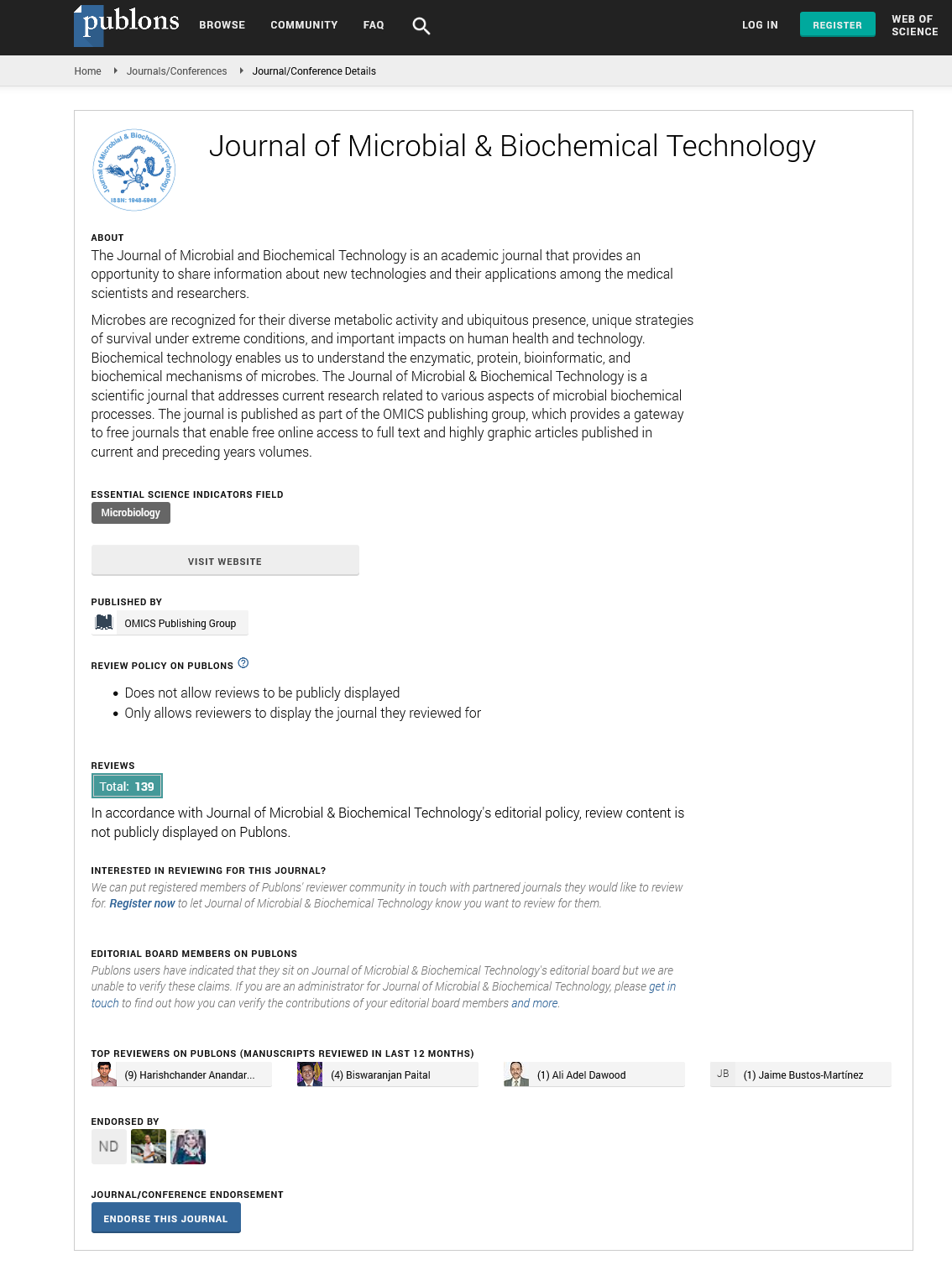Indexed In
- Academic Journals Database
- Genamics JournalSeek
- Academic Keys
- JournalTOCs
- China National Knowledge Infrastructure (CNKI)
- Scimago
- Access to Global Online Research in Agriculture (AGORA)
- Electronic Journals Library
- RefSeek
- Directory of Research Journal Indexing (DRJI)
- Hamdard University
- EBSCO A-Z
- OCLC- WorldCat
- SWB online catalog
- Virtual Library of Biology (vifabio)
- Publons
- MIAR
- University Grants Commission
- Geneva Foundation for Medical Education and Research
- Euro Pub
- Google Scholar
Useful Links
Share This Page
Journal Flyer

Open Access Journals
- Agri and Aquaculture
- Biochemistry
- Bioinformatics & Systems Biology
- Business & Management
- Chemistry
- Clinical Sciences
- Engineering
- Food & Nutrition
- General Science
- Genetics & Molecular Biology
- Immunology & Microbiology
- Medical Sciences
- Neuroscience & Psychology
- Nursing & Health Care
- Pharmaceutical Sciences
Translational clinical microbiology imaging: An advanced method in clinical detection of Mycobacterium tuberculosis infection using 2-deoxy-2-(18F) fluoro-D-glucose PET-CT
2nd International Conference on Clinical Microbiology & Microbial Genomics
September 16-17, 2013 Hampton Inn Tropicana, Las Vegas, NV, USA
Abdul Jalil Nordin
Scientific Tracks Abstracts: J Microb Biochem Technol
Abstract:
Mycobacterium tuberculosis , acid fast bacilli stained by Ziehl-Neelsen?s technique is a gram-positive bacteria. Infection caused by this organism is an important clinical diagnosis for consideration especially in extra pulmonary location. Despite slow replication rate (15-20 hours), the pathogen survived in many unfavorable conditions due to its unusual acidic wall content; the hallmark for its resistance and virulence. Infection by this organism is often related to the presence of hyper virulence mutant strain. Deletion of modifying enzymes or regulators that respond to environmental stimuli is responsible for these mutants to induce a protective granuloma enabling long-term persistent infection. M. tuberculosis survives and grows in an oxygenated environment to oxidized glucose substrate in order to obtain energy during the process of cellular respiration. Radiopharmaceutical agent 2-deoxy-2-( 18 F) fluoro-D-glucose ( 18 F-FDG) is a chemical widely used for in-vivo oncology imaging. This glucose analogue is a positron emitter. When injected into the body, 18 F-FDG is taken into living tissues similar to glucose metabolic pathway. The intensity of uptake depends on the rate of tissue metabolism. This process can be mapped and quantified using a positron emission tomography computed tomography system, an integrated imaging modality. This study highlights the features of multisystem M. tuberculosis infection translated through the rate of tissue metabolism using 18 F-FDG tracer. The presence of m.tuberculosis infection or granulomatous lesion is qualitatively and quantitatively analyzed against microbial isolation and tissue biopsy yield. In view of increasing worldwide incidence of M. tuberculosis infection and multidrug resistance (MDR) strain, the encouraging result of this study offer a non-conventional solution in clinical detection of tuberculosis infection granting further studies in translational clinical microbiology using molecular imaging technique.
Biography :
Abdul Jalil Nordin completed his Medical Degree training at the age of 24 from the National University Malaysia and obtained his post graduate Masters Radiology certification from University Malaya, School of Medicine in 1996. He is the Director for Centre of Excellence in Diagnostic Nuclear Imaging, University Putra Malaysia. He has published more than 40 papers in reputed journals, chapters and books. He is serving as an editorial board member of repute international journals. He is also the Vice President for Nuclear Medicine and Molecular Imaging, College of Radiology, Academy Medicine Malaysia. He is also board member of Speciality Subcommittee Radiology for the National Specialist Register Malaysia.

